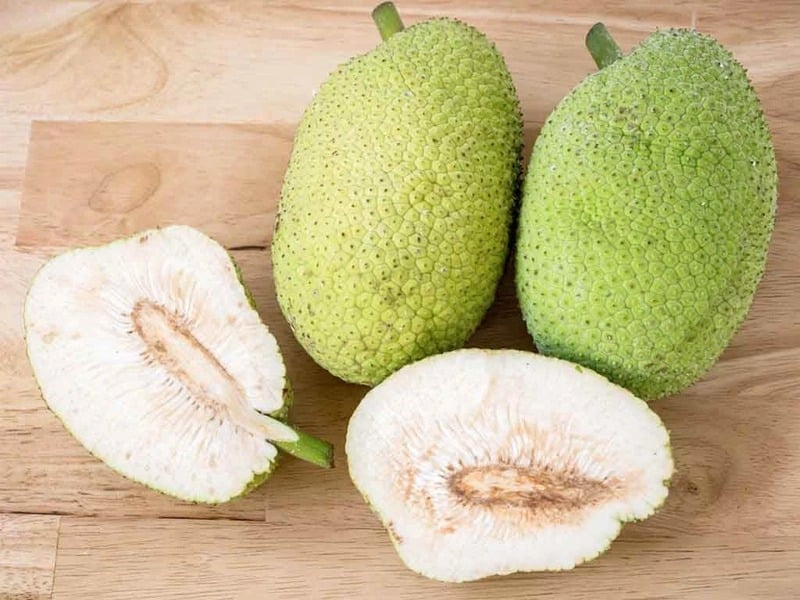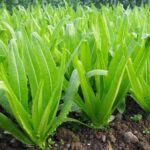Sake Fruit: Unveiling Vietnam’s Affordable Superfood with a Plethora of Health Benefits
In recent years, there has been a growing trend towards healthy eating, especially in Vietnam. Consumers are gravitating towards natural, minimally processed, and nutrient-rich products to support their well-being. Superfoods like chia seeds, oatmeal, and quinoa have gained immense popularity.
In Vietnam, there is a fruit that is often likened to “ginseng” or “bird’s nest” in terms of its nutritional value, but at a much more affordable price. This fruit is known as sake fruit, and it hasn’t yet received the recognition it deserves.
Sake fruit boasts a high nutritional profile and offers a myriad of health benefits. But what sets it apart is its versatility in culinary applications. For these reasons, sake fruit is poised to become the next big superfood, catering to the demands of modern consumers.
Nutritional Value and Amazing Benefits of Sake Fruit
Sake fruit impresses with its creamy texture, chewy consistency, and natural subtle sweetness. But its real standout quality lies in its impressive health benefits. Packed with carbohydrates, sake fruit serves as an excellent energy source for athletes and individuals with demanding jobs.
Additionally, sake fruit is rich in potassium, which helps regulate blood pressure, and fiber, which reduces bad cholesterol. This combination supports cardiovascular health and lowers the risk of stroke. The fiber content also improves digestion, stimulates intestinal peristalsis, and enhances nutrient absorption.

The benefits don’t stop there. Sake fruit is a rich source of vitamin C and antioxidants, boosting immunity, preventing aging, and protecting cells. Its high calcium and phosphorus content strengthen bones and prevent osteoporosis. Moreover, by promoting collagen production, sake fruit contributes to healthy skin and hair.
Notably, the fiber in sake fruit helps regulate blood sugar levels, control diabetes, and induce a prolonged feeling of fullness, making it an important component of a healthy weight loss regimen.
Development Potential in Vietnam and Abroad
Despite its abundance and alignment with the “eat clean” trend, sake fruit remains relatively unknown in Vietnam. Being gluten-free, low in fat, and nutrient-dense, sake fruit can easily substitute wheat and rice in products like sake flour, bread, noodles, and pastries.
It caters not only to dietary and vegan restrictions but also unlocks a world of creativity in the food industry, including sake-based snacks, dried sake, and nutritious cereal mixes.
Beyond the domestic market, there is a growing demand for sake fruit in countries like Japan, South Korea, and the United States, where sake-derived products have already made significant inroads into the food industry. This presents a significant opportunity for Vietnam to leverage its advantages, expand production, and boost exports.

With its superior nutritional profile, high antioxidant content, and culinary versatility, sake fruit is paving the way for Vietnam’s agricultural and food industries to explore new, promising directions.
In addition to its nutritional benefits, sake fruit holds potential for the functional food industry, catering to the growing demand for health and wellness products. This avenue presents a promising opportunity to expand the market reach of this remarkable fruit.
Sake fruit can also be a flagship product in the organic agricultural business model. By cultivating and distributing sake fruit organically, farmers can elevate the value of Vietnamese agricultural produce while aligning with the burgeoning trend of natural and sustainable consumption.
Despite its numerous advantages, sake fruit hasn’t penetrated the domestic market extensively, largely due to limited consumer awareness. Many individuals are unfamiliar with its nutritional value and benefits, resulting in subdued demand. To address this, strategic marketing and communication campaigns are necessary, utilizing social media platforms, television, and clean food events to raise awareness and shift consumption patterns.
Another factor influencing the development of the sake fruit market is the limited involvement of businesses. Inviting investments, conducting market research, and collaborating with clean food supply chains will propel sake fruit further along the value chain of agricultural produce.
Moreover, the current processing technology for sake fruit remains basic, primarily involving traditional boiling and frying methods. This limits the accessibility of sake fruit products to busy consumers seeking convenient food options. Therefore, investing in advanced processing methods to produce sake flour, sake milk, and canned food products is essential to enhance the product’s competitiveness and commercial value.
With its nutritional prowess, versatility, and alignment with modern consumption trends, sake fruit is poised for success as a leading healthy food choice in Vietnam. With strategic investment and proper direction, this fruit can not only propel the clean food industry but also generate sustainable economic value, charting a new course for Vietnam’s agriculture and food exports.
3 Ways Chamomile Tea Can Help You Sleep Like a Baby
Introducing the ultimate remedy for sleepless nights – a cup of chamomile tea. Its delicate fragrance and natural sedative properties make it the perfect bedtime companion, helping you drift off into a peaceful slumber. With its calming effects, this tea is a natural solution for those struggling to find a good night’s rest.
The Ultimate ‘Natural Cleanse’: Two Fruits from Vietnam with Minimal Pesticides, Delicious Taste, and Nutritional Benefits Worth Discovering
Uncover the two ‘treasures’ grown in Vietnamese gardens, renowned for their cultivation process that almost eliminates the need for pesticides. Not only do they boast delicious, naturally sweet flavors, but they are also packed with essential nutrients, offering a bountiful supply of goodness for your body.



































